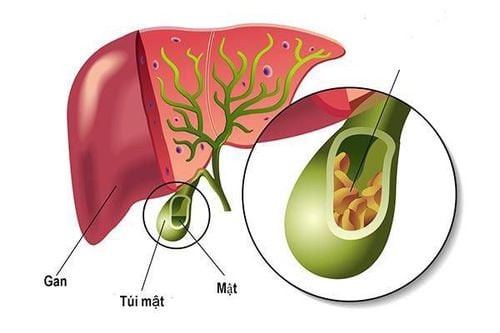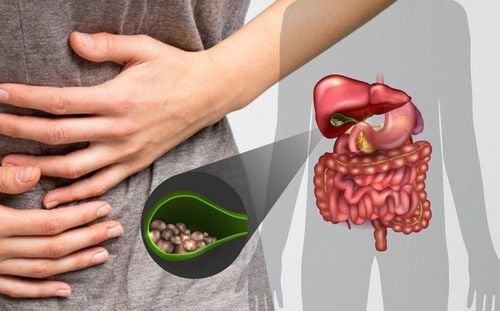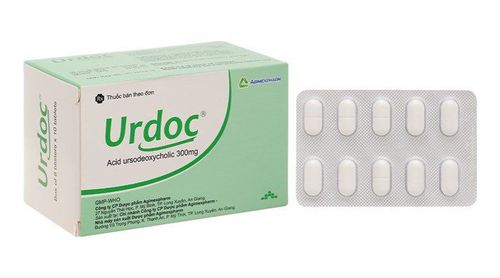This is an automatically translated article.
The article is professionally consulted by Master, Doctor Nguyen Thai Binh - Gastroenterologist - Department of General Surgery - Vinmec Ha Long International General Hospital.Open cholecystectomy is surgery to remove the gallbladder with an incision directly on the abdominal wall, to treat gallstones, cholecystitis, pancreatitis... Open cholecystectomy is invasive. than laparoscopic surgery, however, some patients have to switch from laparoscopic surgery to open surgery such as: patients with obesity, bleeding during surgery, a history of previous surgery causing sticky scars, emergency surgery..
.
1. Learn about open cholecystectomy
The gallbladder is a small pear-shaped sac that belongs to the bile duct system, which includes the body, duct, and neck of the gallbladder. The location of the gallbladder is located close to the liver, below the right costal margin and right abdomen, 80-1000mm in length, 30-40mm in width. In the human body, the gallbladder functions to store and concentrate bile, a digestive juice secreted by the liver, before it is emptied into the small intestine.Indications cholecystectomy will be performed in cases where the patient has severe abdominal pain due to gallstones; Gallbladder polyps larger than 10mm; Gallbladder cancer... There are two main methods of cholecystectomy: laparoscopic cholecystectomy and open cholecystectomy.
Open cholecystectomy is surgery to remove the gallbladder by making an incision directly on the abdominal wall. Compared with laparoscopic cholecystectomy, open cholecystectomy requires longer hospital stay and recovery care. However, 1% of patients were forced to switch from laparoscopic surgery to open surgery such as: patients with obesity, bleeding during surgery, a history of previous surgery causing sticky scars, emergency surgery, etc. Decided to switch from surgery. Laparoscopic to open cholecystectomy is a safe surgical decision when the surgeon considers it necessary.
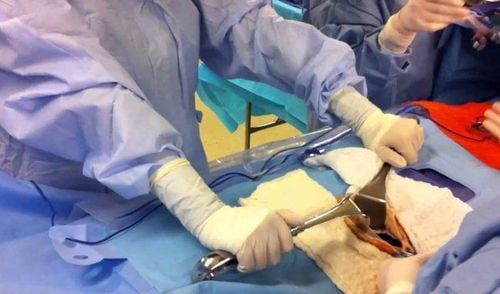
2. Indications/Contraindications for open cholecystectomy
Indications: Open cholecystectomy is indicated in the following cases:
Gallstones in the gallbladder (gallstones); Gallstones in the bile ducts (choledocholithiasis); Cholecystitis ; Pancreatitis . Contraindications : Patients are contraindicated for open cholecystectomy in the following cases:
Having coagulation disorders, severe systemic infections; There are contraindications to general anesthesia: cardiovascular disease, severe respiratory disease.
3. Open cholecystectomy procedure
3.1. Preparation before surgery A few days before open cholecystectomy, the patient is given a pre-anaesthetic examination and performed a number of tests such as: blood test, general health examination and screening for accompanying diseases to ensure that the patient is safe and healthy. Patients are eligible for surgery. Before surgery, patients are asked to bathe with Betadine antiseptic solution. Within 8 hours before surgery, patients should not eat or drink anything, stop using drugs including pain relievers, with the exception of certain medications that are authorized by the anesthesiologist.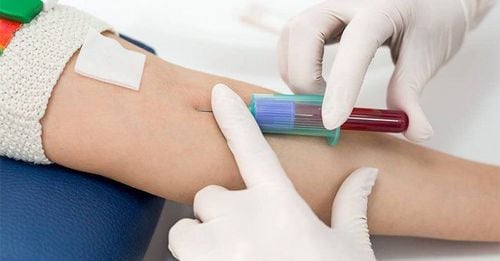
3.2. Surgical procedure An open cholecystectomy is performed under general anesthesia for about an hour. The surgeon will make an incision in the patient's abdomen, separating the cystic duct from the artery. Then separate the gallbladder from the liver and perform cholecystectomy.
3.3. Complications after open cholecystectomy Complications that can occur with open cholecystectomy include:
Bleeding; Infection; Injury to the common bile duct; Other complications: Residual stones, Diarrhea, Prolonged pain, Rectal stones, Peritonitis, Allergies... The above complications are quite rare. Patients can minimize the risk of complications by following their doctor's instructions about preparing for surgery. In case of complications, it is necessary to notify the doctor for timely treatment.
4. Caring for patients after open cholecystectomy

After open cholecystectomy, the patient can go home after 2-4 days, return to work after about 6 weeks depending on the health status and the invasiveness of the surgery on the body. In order for the recovery process after open cholecystectomy to achieve optimal results, patients should note the following:
Regular exercise with gentle movements will help improve health faster; After surgery, the patient should eat liquid, easy to digest food such as porridge, soup, boiled vegetables... Avoid fried and greasy foods to reduce the load on the hepatobiliary system; Take medication as directed by your doctor; Keep the incision clean and dry. After bathing, the wound should be dried with a clean towel. Regularly check the incision for early signs of infection. Do not arbitrarily apply medicine or cream to the incision when the wound has not healed; In case the patient has a fever, abdominal pain, vomiting, or fluid flows from the incision, they need to go to the hospital for timely examination and treatment of complications. Currently, hospitals under Vinmec Health System all have open cholecystectomy in the treatment of gallstones and gallbladder diseases. Patients should choose Vinmec thanks to the following advantages:
Vinmec owns a system of modern equipment, advanced medical machinery, maximum support for the surgical process; Modern facilities, aseptic environment ensure patient safety, limit complications; A team of highly qualified medical professionals, well-trained at home and abroad, seasoned with experience, able to improvise and promptly handle unusual problems; Patients are cared for and closely monitored after surgery, rested to recuperate in a standard and fully equipped ward. Master, Doctor Nguyen Thai Binh has more than 20 years of experience working in abdominal surgery. He is a former resident of Sainte Marguerite and Nord Hospitals (Marseille, France).
Please dial HOTLINE for more information or register for an appointment HERE. Download MyVinmec app to make appointments faster and to manage your bookings easily.






